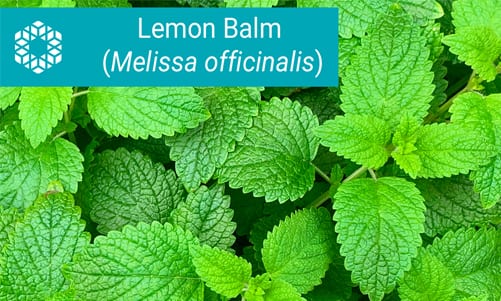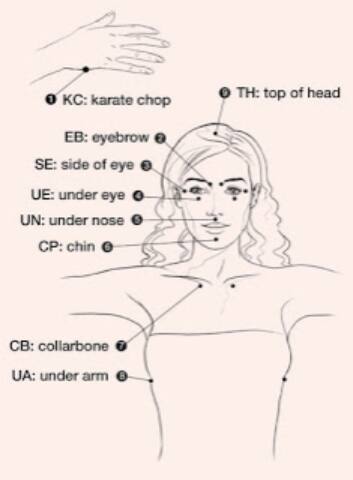
How to Avoid Burnout: Top Herbs and Lifestyle Tips
Published: October 2020
We’ve all had those days, when it’s just difficult to get out of bed—and once you’re up, it’s all downhill from there. You’re anxious, unmotivated and just don’t feel well—and even after countless caffeinated beverages, you don’t have much energy.
Everyone may feel this way from time to time. The problem arises when exhaustion and stress become the rule and not the exception. According to the World Health Organization, feeling chronically worn out and stressed is called “burnout syndrome,” and it mainly affects the working population.1
People who experience burnout might feel like no one can relate to what they are going through. But physicians, scientific research, social media and even some workplaces are recognizing the importance of taking care of our mental health – just as much as our physical health. The more we take care of our mental health, after all, the more well we’ll feel, inside and out.
During this unprecedented time in our world, when transitioning to working from home has become the norm, supporting mental health through lifestyle and natural remedies is more important than ever.
What is mental burnout?

Burnout is a “syndrome conceptualized as resulting from chronic workplace stress that has not been successfully managed.” It is not considered an illness, but rather as a condition that can impact your health.
Symptoms of burnout include:1,2
- Exhaustion, energy depletion, insomnia
- Anger, irritability, sadness
- Negativity, cynicism and emotional distance from your job
- Reduced productivity at work
What are the health consequences of burnout?
If left unmanaged, burnout might lead to health issues—just like any form of chronic, unmanaged stress—such as greater vulnerability to illness, substance abuse or high blood pressure.2
Although the hormones our bodies produce during stressful times are necessary in short bursts, they can create mental and physical issues when they are constantly being produced. Chronic stress can contribute to:3
- Anxiety
- Depression
- Digestive problems
- Headaches
- Sleep problems
- Weight gain
- Memory and concentration impairment
How does burnout happen?
Many factors can cause burnout, but all of them stem from unmanaged chronic stress. Factors that can lead to burnout include:2
- Not having social support from coworkers, family and/or friends
- Absence of work-life balance--working with no clear “off” hours is often a major contributor
- Lack of control in a workplace (i.e. a chaotic workplace, as seen in service industries, including but not limited to healthcare or legal work)

How working from home can make burnout worse
Since the Covid-19 pandemic began, working from home has become mainstream in our society. Not only is working from home a huge change in routine, it can be difficult to clearly define when you are “on” and “off” the clock. Of course, this may be easier for some than others. Some people have children at home that they must now home-school while doing their own work. Other people may not have school-aged children, but they may be dealing with an increased workload and stricter deadlines because of the perception that there is more “time” to get things done when you are home. No matter what your situation is, we are all in this together.
To avoid experiencing burnout from working at home, it is essential to mirror the hours you work at the office while at home. As easy as it is to get caught up finishing that project, or crossing off another item from your to-do list, the best approach is to “sign off” at the time you are supposed to and come back to your tasks with a clear head the next day.
As humans, we want to perform well and get our jobs done, especially during this time of job uncertainty. However, there is a difference between being productive and putting unnecessary stress on ourselves.
After all, one of the main causes of burnout is lack of work-life balance and working with no clear “off” hours. Even while working from home, it is in our best interest to maintain the same work hours as before to avoid possible mental overwhelm and burnout.
5 natural remedies to help with burnout
It's a Catch-22: you need to be more productive, but you have less energy than you had before.
How are you supposed to get things done?
Along with lifestyle modifications provided in the next section, several herbs have been scientifically validated to promote energy and calmness—at a time when you need this the most.
Energize with ashwagandha

An herb that has been used in Ayurvedic medicine—one of the oldest holistic medical systems, originating in India—for thousands of years, ashwagandha (Withania somnifera) is an adaptogen, which means it works by helping restore the body’s natural balance and fighting the negative effects of chronic stress. In fact, studies show that ashwagandha has been effective in improving concentration, fatigue and relieving feelings of anxiety.4-6
Keep calm with lemon balm

Lemon balm (Melissa officinalis) is a member of the mint family that has been shown in research to help alleviate stress, depression and anxiety scores, as well as sleep disturbances.7,8 These benefits come from lemon balm’s ability to inhibit the breakdown of an important calming neurotransmitter in the brain, GABA, as demonstrated in preclinical studies.9 By supporting GABA, lemon balm may promote a sense of calmness and relaxation, which is much needed for the anxious person who is not getting adequate sleep and is suffering from burnout.
Caffeine-free energy with L-theanine

This an amino acid from green tea is known to induce calming effects while simultaneously helping to improve alertness.10 It may also assist in reducing stress and anxiety in people exposed to stressful conditions.11 Preclinical studies indicate that L-theanine may promote anxiety-easing effects by blocking the effects of the excitatory neurotransmitter called glutamate.12 Similarly to lemon balm, L-theanine also appears to stimulate production of GABA, which may ease the brain without producing sleepiness, similar to anti-anxiety medications.13
Reclaim balance with rhodiola
Rhodiola (Rhodiola rosea) is an herb that grows in cold, mountainous regions of Europe and Asia. Like ashwagandha, rhodiola is an adaptogen, helping bring the body’s natural stress response back into balance. Rhodiola has been studied in people with burnout and was found to reduce their stress and fatigue while improving mental performance and mood.14-16
Fight fatigue with French oak wood extract
French oak wood extract originates from the tree species Quercus robur. This extract was considered sacred by the ancient Greeks, Hebrews and Romans, who used it to fight against fever and diarrhea and as an antiseptic. Recent research shows that French oak wood extract is effective in relieving fatigue, decreasing emotional drainage and improving levels of interest and enthusiasm in people suffering from burnout syndrome.17
How your lifestyle can improve burnout symptoms
If you are suffering from burnout syndrome, you can incorporate lifestyle modifications into your day to help counter its negative effects. These techniques include:
- Eat the rainbow! Consume a diet full of fruits and vegetables, especially berries, citrus and green leafy vegetables. Research shows this type of diet could promote higher levels of optimism and self-worth, reduce levels of psychological distress and protect against depressive symptoms.18
- Get moving. Engaging in at least 150 minutes per week of moderate-intensity physical activity (i.e. brisk walking) not only helps with chronic disease prevention but benefits mental health and sleep as well.19 People with burnout syndrome experienced positive effects on their symptoms after participating in regular physical activity for at least 12 weeks.20
- Get your ZZZs. Sleep hygiene is vital when it comes to getting adequate sleep.21 That means having a regular bedtime and wake time. When it’s time for bed, minimize light, specifically the blue light emitted from your phone, iPad or smart TV, and avoid large meals or caffeine right before bedtime.
Why anyone suffering from burnout should consider meditation
Meditation and mindfulness may be helpful in regulating our stress response.2,22 Taking at least five minutes out of our busy days in the morning and evening to sit in stillness with our body and mind can make a huge difference in how we perceive the day ahead and how we sleep. The term “meditation” can be daunting for some people—conjuring up images of people sitting cross-legged on the grass chanting “ommmm.” But meditating can be as easy as sitting up in your bed in the morning, taking a few deep breaths in and out, and listening to the sounds around you. There are no “rules” for meditation.
A common misconception about meditating is that you must completely shut off your mind or you’re not doing it correctly. Instead of focusing on shutting your mind off or stopping your thoughts, focus more on just quieting your mind, a technique called mindfulness. You can be aware of the thoughts that come in and out, but do not focus on the actual thought. Just let them float in and out, trying not to associate any emotions behind them. Of course, this will take practice, but investing a little bit of time now may make a huge difference later. That’s important because mindfulness has been shown to reduce levels of burnout and emotional exhaustion in nurses, the career most prone to burnout during this chaotic time.22
If you are interested in trying out meditation and need some help to get you started, the following mobile apps have been very helpful in my own meditation journey:
- Insight Timer
- Headspace
- Calm
Tap into a calmer mindspace with Emotional Freedom Technique (EFT)
In addition to mindfulness, tapping can be an important tool to help fight burnout. Emotional Freedom Technique, also known as “tapping,” is a psychological acupressure technique that has gained popularity in the alternative medicine and holistic healing world. The potential benefits of EFT are now being shown in clinical research, indicating that it may help reduce anxiety, depression, PTSD and even cravings.23, 24
EFT makes full use of our mind-body connection. The theory is that our body contains an energy system that travels along pathways known as “meridians.” The nine meridians are located on the side of the hand (aka karate chop point), top of the head, top of the eyebrows, on the side of the eyes, beneath the nose, on the chin and collarbone, and underneath the arms, about a hand width from the armpit.25
EFT is practiced by tapping on each meridian point with your fingertips (not fingernails) using gentle pressure while actively thinking about or saying a problem out loud. It does not matter how many fingers are used to tap on these points, but two is the most common. Here is an example of a basic tapping sequence:

- “Even though I feel completely drained and burned out from work and my day-to-day life, I deeply and completely love and accept myself.” While thinking or saying this statement out loud three times, you simultaneously tap on the side of your hand.
- Then, take a deep breath in and out and begin tapping about five to seven times on each of the remaining eight meridian points while either repeating the same phrase or something shorter like, “I feel so burned out” to help you mentally focus on the issue.
- After this first round of tapping on the “issue,” begin a second round of tapping, focusing on positive statements, such as “I have faith that my situation at work will get better” or “I believe in myself and I will incorporate more self-care, which will help me at work.” There is no right or wrong statement. You can do as many tapping rounds as possible until you feel a sense of calm wash over you.
Keep your cool! Avoiding burnout is possible
The most important aspect of managing burnout is figuring out the root cause and working to address it. And part of that might be acknowledging that indeed, you’re in the throes of burnout. Even though burnout syndrome is commonly seen in service-related jobs, it can affect anyone working in a traditional or non-traditional work environment (i.e. stay-at-home parents and working remotely). Feeling burned out is common and should not make you feel “less than” anybody else.
Whether it is defining a more clear time to be “off the clock,” speaking to your managers or human resources department about the importance of home/life balance, spending more time with your family or friends for some social support, or even making sure you have alone time — any or all of these steps may be beneficial.Incorporating the above lifestyle modifications is free and can be a great way to improve your well-being. Of course, the combination of the lifestyle changes plus the herbal remedies is a more comprehensive approach to getting your mental health back on track.
Remember, whatever you may be feeling, YOU ARE NOT ALONE. If practicing these techniques and taking the herbal remedies do not offer as much relief as you had hoped, a licensed mental health counselor or your general practitioner are just one phone call away.
Related Article: Common Cold Protocol
References
- World Health Organization. Burn-out an "occupational phenomenon": International Classification of Diseases. Accessed 3/6/2020. https://www.who.int/mental_health/evidence/burn-out/en/
- Mayo Clinic. Job burnout: How to spot it and take action. Accessed 3/6/2020. https://www.mayoclinic.org/healthy-lifestyle/adult-health/in-depth/burnout/art-20046642
- Mayo Clinic. Chronic stress puts your health at risk. Accessed 3/11/2020. https://www.mayoclinic.org/healthy-lifestyle/stress-management/in-depth/stress/art-20046037
- The Journal of the American Nutraceutical Association 2008;11(1):50-56.
- PLoS One. 2009;4(8):e6628.
- Indian J Psychol Med. 2012;34(3):255-62.
- Clinical nutrition ESPEN. 2018;26:47-52.
- Journal of ethnopharmacology. 2015;164:378-384.
- Canadian journal of physiology and pharmacology. 2007;85(9):933-942.
- Asia Pacific journal of clinical nutrition. 2008;17 Suppl 1:167-168.
- Plant Foods Hum Nutr. 2019
- Biological psychology. 2007;74(1):39-45.
- Journal of herbal pharmacotherapy. 2006;6(2):21-30.
- International journal of psychiatry in clinical practice. 2018;22(4):242-252.
- Neuropsychiatric disease and treatment. 2017;13:889-898.
- Planta medica. 2009;75(2):105-112.
- Minerva Medica. 2018 Jun;109(3):211-217.
- Nutrients. 2020;12(1):E115.
- American Heart Association. Recommendations for Physical Activity in Adults and Kids. Accessed 3/13/2020. https://www.heart.org/en/healthy-living/fitness/fitness-basics/aha-recs-for-physical-activity-in-adults
- Journal of clinical medicine. 2020;9(3):E667.
- International archives of occupational and environmental health. 2019:10.1007/s00420-019-01504-6.
- Journal of advanced nursing. 2020:10.1111/jan.14318.
- Journal of evidence-based integrative medicine. 2019;24:2515690X18823691-2515690X18823691.
- The Permanente journal. 2017;21:16-100.
- The Tapping Solution. What is Tapping and How Can I Start Using it? Accessed 3/13/2020.



